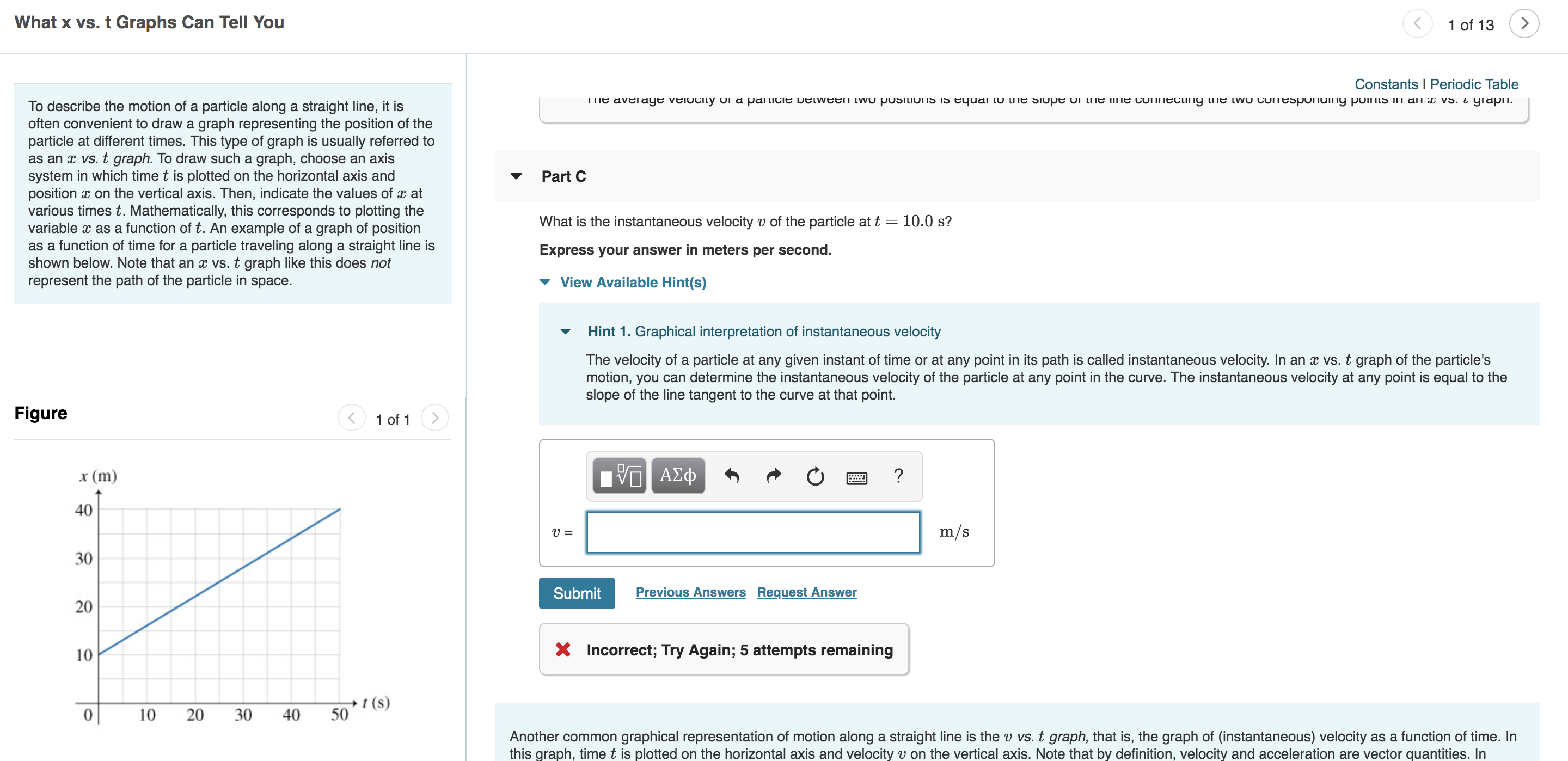What x vs. t Graphs Can Tell You 1 of 13 Constants I Periodic Table Te averaye veiocily UI a par LICIE Delween two PUSILIONNS IS Equai lo LIe SIope UI Ne e CONNecliIy tne iwU COITEspuINUINy puiLTS m an ai v5. i yrapT. To describe the motion of a particle along a straight line, it is often convenient to draw a graph representing the position of the particle at different times. This type of graph is usually referred to as an vs. t graph. To draw such a graph, choose an axis system in which time t is plotted on the horizontal axis and position x on the vertical axis. Then, indicate the values of x at various times t. Mathematically, this corresponds to plotting the variable as a function of t. An example of a graph of position as a function of time for a particle traveling along a straight line is shown below. Note that an x vs. t graph like this does not represent the path of the particle in space. Part C What is the instantaneous velocity v of the particle at t 10.0 s? Express your answer in meters per second. View Available Hint(s) Hint 1. Graphical interpretation of instantaneous velocity The velocity of a particle at any given instant of time or at any point in its path is called instantaneous velocity. In an vs. t graph of the particle's motion, you can determine the instantaneous velocity of the particle at any point in the curve. The instantaneous velocity at any point is equal to the slope of the line tangent to the curve at that point. Figure 1 of 1 V ΑΣφ ? x (m) 40 m/s 30 Previous Answers Request Answer Submit Incorrect; Try Again; 5 attempts remaining t(s) 50 10 10 20 Another common graphical representation of motion along a straight line is the v vs. t graph, that is, the graph of (instantaneous) velocity as a function of time. In this graph, time t is plotted on the horizontal axis and velocity v on the vertical axis. Note that by definition, velocity and acceleration are vector quantities. In 40 30 20 10
Displacement, Velocity and Acceleration
In classical mechanics, kinematics deals with the motion of a particle. It deals only with the position, velocity, acceleration, and displacement of a particle. It has no concern about the source of motion.
Linear Displacement
The term "displacement" refers to when something shifts away from its original "location," and "linear" refers to a straight line. As a result, “Linear Displacement” can be described as the movement of an object in a straight line along a single axis, for example, from side to side or up and down. Non-contact sensors such as LVDTs and other linear location sensors can calculate linear displacement. Non-contact sensors such as LVDTs and other linear location sensors can calculate linear displacement. Linear displacement is usually measured in millimeters or inches and may be positive or negative.
How do you find instantaneous velocity? Delta X = 30m Vav=0.6 m/s t=10.0s

Trending now
This is a popular solution!
Step by step
Solved in 3 steps with 3 images







